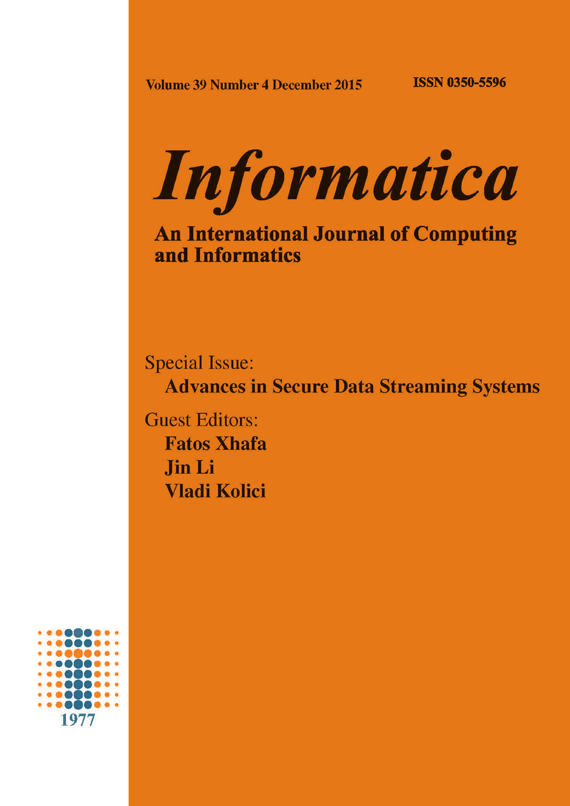Evolutionary Multiobjective Optimization Based on Gaussian Process Modeling
Abstract
This paper presents a summary of the doctoral dissertation of the author, which addresses the task of evolutionary multiobjective optimization using surrogate models. The main contributions are done for the optimization problems, where solutions are presented with uncertainty. To compare solutions under uncertainty and improve the optimization results the new relations for comparing solutions under uncertainty are defined. These relations reduce the possibility of incorrect comparisons due to the inaccurate approximations. The relations under uncertainty are then used in the new surrogate-model-based multiobjective evolutionary algorithm called GP-DEMO. The algorithm is thoroughly tested on benchmark and real-world problems and the results show that GP-DEMO, in comparison to other multiobjective evolutionary algorithms, produces comparable results while requiring fewer exact evaluations of the original objective functions.References
Deb, K. (2001). Multi-objective optimization using evolutionary algorithms. Wiley, New York.
Mlakar, Miha. Evolutionary multiobjective optimization based on Gaussian process, PhD Thesis, IPS Jožef Stefan, Ljubljana, Slovenia, April, 2015
Mlakar, M., Tušar, T., & Filipič, B. Comparing solutions under uncertainty in multiobjective optimization. Mathematical Problems in Engineering, 2014. doi:10 .1155/2014/817964
Mlakar, M., Petelin, D., Tušar, T., & Filipič, B. GP-DEMO: Differential evolution for multiobjective optimization based on Gaussian process models. European Journal of Operational Research, 243 (2), 347–361
T. Robič and B. Filipič, DEMO: Differential evolution for multiobjective optimization, in Proc. of 3rd Int. Conf. Evol. Multi-Criterion Optimization, 2005, pp. 520–533.
Downloads
Published
Issue
Section
License
I assign to Informatica, An International Journal of Computing and Informatics ("Journal") the copyright in the manuscript identified above and any additional material (figures, tables, illustrations, software or other information intended for publication) submitted as part of or as a supplement to the manuscript ("Paper") in all forms and media throughout the world, in all languages, for the full term of copyright, effective when and if the article is accepted for publication. This transfer includes the right to reproduce and/or to distribute the Paper to other journals or digital libraries in electronic and online forms and systems.
I understand that I retain the rights to use the pre-prints, off-prints, accepted manuscript and published journal Paper for personal use, scholarly purposes and internal institutional use.
In certain cases, I can ask for retaining the publishing rights of the Paper. The Journal can permit or deny the request for publishing rights, to which I fully agree.
I declare that the submitted Paper is original, has been written by the stated authors and has not been published elsewhere nor is currently being considered for publication by any other journal and will not be submitted for such review while under review by this Journal. The Paper contains no material that violates proprietary rights of any other person or entity. I have obtained written permission from copyright owners for any excerpts from copyrighted works that are included and have credited the sources in my article. I have informed the co-author(s) of the terms of this publishing agreement.
Copyright © Slovenian Society Informatika








